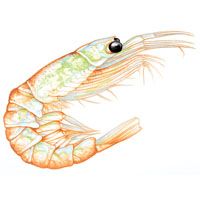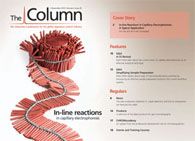Licence to krill
A study into the composition of krill oil may offer new insights into the complexity of this source of omega-3.

A study into the composition of krill oil may offer new insights into the complexity of this source of omega-3.
In contrast to traditional supplements, which are based on omega-3 fatty acids bound to triglycerides (such as cod liver oil and fish oil) or bound as ethyl esters, krill oil is reported to contain a high proportion of omega-3 fatty acids bound to phospholipids. Krill oil has been reported to have stronger effects than fish oil on specific parameters related to the metabolic syndrome.1
A study published in the journal Lipids2 aimed to characterize the phospholipids in krill oil in more detail to evaluate the composition of the fatty acids present. Qualification was performed with separation on a reversed-phase chromatography column, while the quantification was obtained with class separation on a normal phase chromatography column. An MS system was then used for the detection and pulsed-Q dissociation fragmentation identified the species.
A total of 69 choline-containing phospholipids were detected, of which 60 were reported to contain omega-3 fatty acids. The phosphatidylcholine concentration was estimated to be about 34 g for every 100 g of krill oil. According to the researchers, these results confirm the complexity of the phospholipid composition of krill oil, and the presence of long chained, heavily unsaturated fatty acids.
1. B. Batetta et al., J. Nutr., 139, 1495–1501 (2009).
2. B. Winther et al., Lipids, on-line 17 September 2010.
This story originally appeared in The Column. Click here to view that issue.
Removing Double-Stranded RNA Impurities Using Chromatography
April 8th 2025Researchers from Agency for Science, Technology and Research in Singapore recently published a review article exploring how chromatography can be used to remove double-stranded RNA impurities during mRNA therapeutics production.
Analytical Challenges in Measuring Migration from Food Contact Materials
November 2nd 2015Food contact materials contain low molecular weight additives and processing aids which can migrate into foods leading to trace levels of contamination. Food safety is ensured through regulations, comprising compositional controls and migration limits, which present a significant analytical challenge to the food industry to ensure compliance and demonstrate due diligence. Of the various analytical approaches, LC-MS/MS has proved to be an essential tool in monitoring migration of target compounds into foods, and more sophisticated approaches such as LC-high resolution MS (Orbitrap) are being increasingly used for untargeted analysis to monitor non-intentionally added substances. This podcast will provide an overview to this area, illustrated with various applications showing current approaches being employed.












